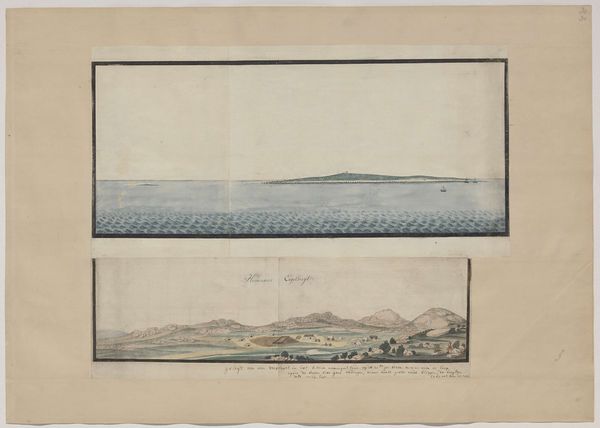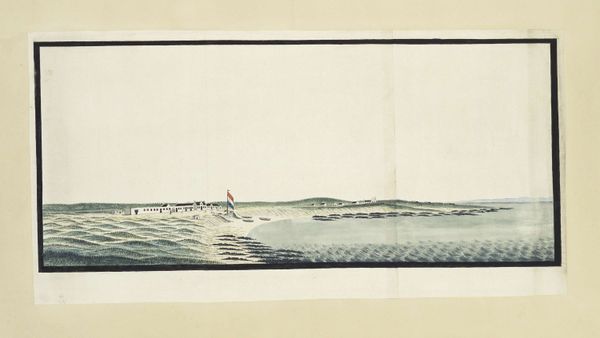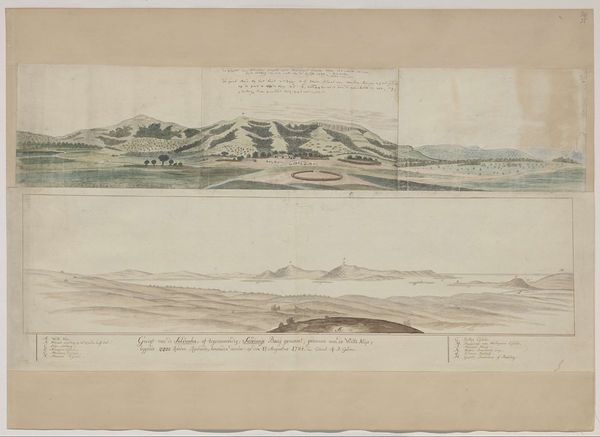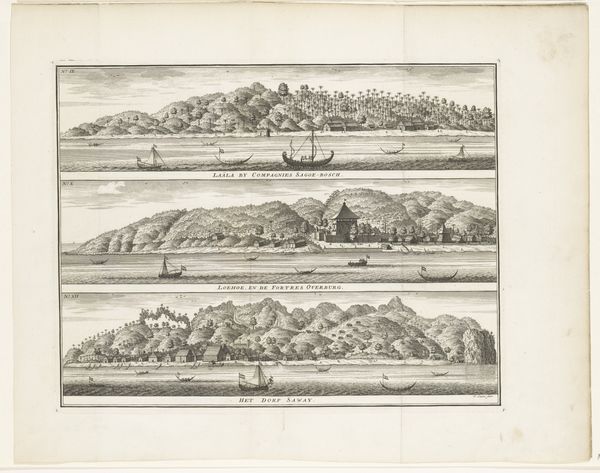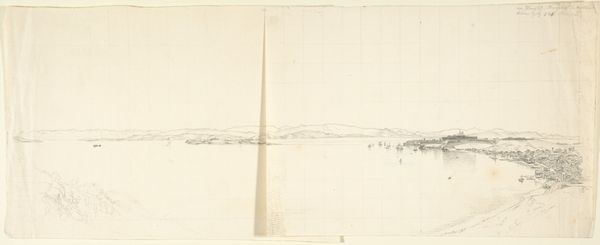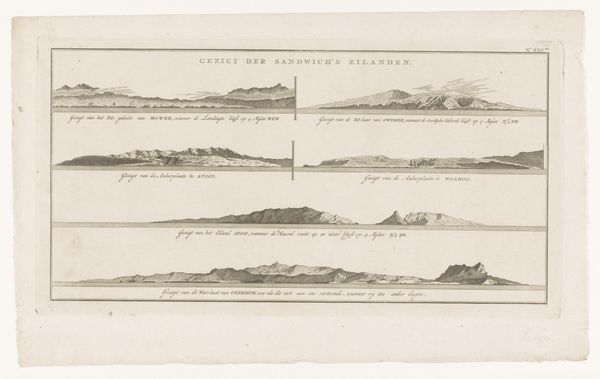
View of Robben Island from the east, from a distance of about 225 metres from the bank Possibly 1777
0:00
0:00
drawing, watercolor
#
drawing
#
water colours
#
landscape
#
watercolor
#
watercolour illustration
#
realism
Dimensions: height 280 mm, width 1370 mm
Copyright: Rijks Museum: Open Domain
Editor: This is "View of Robben Island from the east, from a distance of about 225 metres from the bank," a watercolour drawing, possibly from 1777, by Robert Jacob Gordon. The drawing is split in two registers and, looking at the hazy island in the distance, I’m immediately struck by the implied sense of isolation and separation. How would you interpret this work? Curator: Well, first it's important to note the historical context. Gordon was a military man and explorer working for the Dutch East India Company. This wasn't simply an aesthetic exercise; it was about mapping and claiming territory. Consider how the "objective" gaze of the surveyor becomes a tool for colonial power. This calm, almost idyllic scene obscures the violence inherent in that claim. Does seeing it that way change your perception of "isolation?" Editor: It does. I initially saw a kind of peaceful remoteness, but framing it as a colonial surveyor's view definitely shifts that. The separation becomes one of power and control rather than just distance. So the act of observation itself is part of the story? Curator: Precisely! And the way the island is represented – almost as an empty stage – prepares it for occupation and transformation. It’s presented as terra nullius, conveniently overlooking the indigenous presence or the island's darker history as a place of exile. We need to question whose perspective is being privileged and what narratives are being silenced. Editor: That's fascinating. I hadn’t considered how a landscape drawing could be so politically charged. Curator: Absolutely. Art, especially something that appears so observational, can be deeply embedded in systems of power. Understanding that historical context is key to unlocking these layers of meaning. Now, how does considering Gordon's role change how you view his artistic choices? Editor: It makes me wonder what he chose to include, and perhaps more importantly, what he omitted. Thank you for offering an insightful new interpretation of this piece. Curator: My pleasure! It's all about questioning what we see and understanding the historical forces that shaped its creation.
Comments
No comments
Be the first to comment and join the conversation on the ultimate creative platform.


